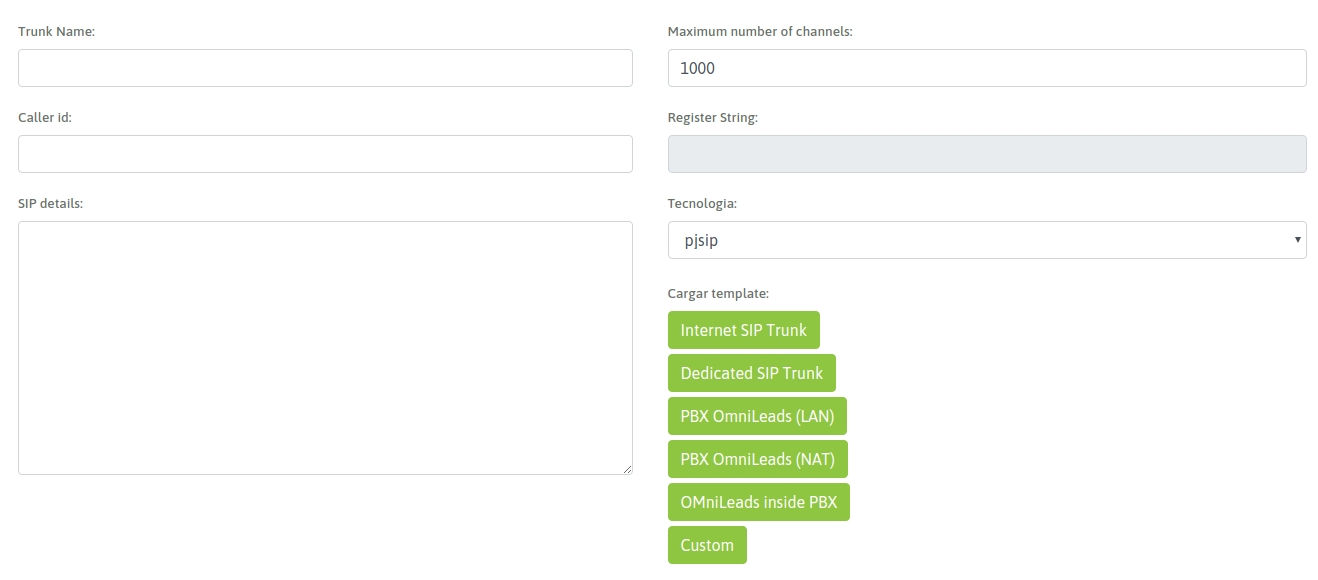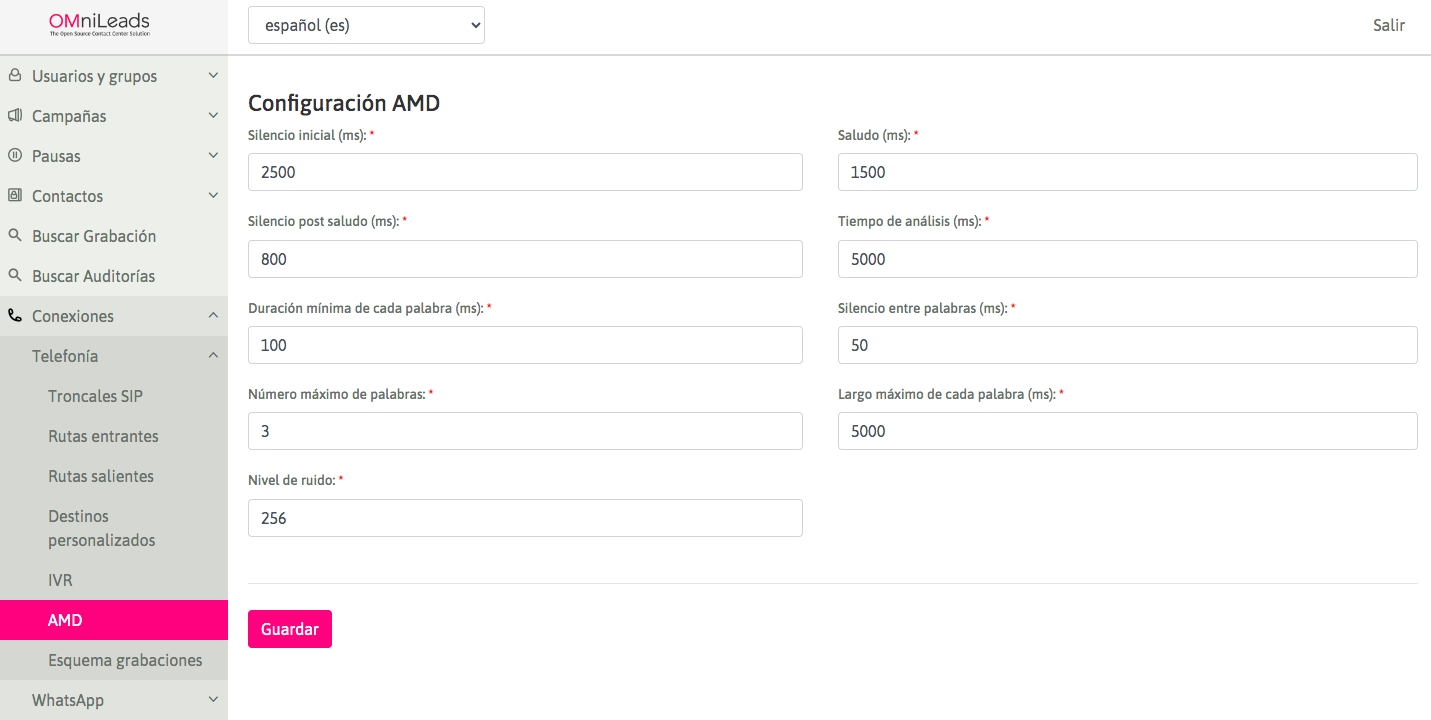☎️Voice Channel Configuration
Telephony Module Configuration
In this section, the necessary configurations to enable our application to interact with the PSTN (Public Switched Telephone Network) are presented. This allows agents to receive incoming calls from external sources and also make outgoing calls to external phones.
Important!
OMniLeads only supports SIP as the interconnection technology with other telephony switches. Therefore, the integrator can configure SIP trunks for ITSP providers, SIP trunks against PBX systems, and/or SIP trunks against FXO/E1/T1 Gateways.
SIP Trunks configuration
To access the configuration, we must go to the Telephony -> SIP Trunks menu and add a new PJSIP trunk. A form similar to the following figure will be displayed:

The form fields are:
Caller ID: This is the number that will be used when making calls through the trunk.
Number of Channels: This indicates the number of channels the link supports.
Trunk Name: This is the name of the trunk. It must be alphanumeric, without spaces or special characters (e.g., Trunk
SIP details: SIP parameters are provided in this text field, using Asterisk's PJSIP configuration Wizard syntax.
Once configured, the SIP Trunks View will display the list of available SIP trunks in the system, as well as their current status:

Below, we present some suggested templates for typical use cases of OMniLeads:
Configuration for outbound call routing
To access the outgoing route configuration view, go to the menu Telephony -> Outgoing Routes: OMniLeads allows managing outgoing call routing over multiple SIP trunks (previously created), in such a way that using criteria like number length or number prefix, it can determine which SIP link to route the call through. Additionally, it is possible to maintain a failover logic between the different SIP trunks assigned to an outgoing route.

Figure 2: Outbound route
Dial options: These are the options of the "Dial" application used by Asterisk at a low level.
Ring time: This is the time (in seconds) that calls routed through this path will attempt to establish a connection with the destination before trying the next trunk or the call is discarded.
Name: This is the name of the route (alphanumeric, no spaces or special characters).
Dialing Patterns: Using patterns, you can represent the types of calls that will be accepted by the route, thus placed on the SIP trunk to finally reach the desired destination. To understand how digits are represented using patterns, it is recommended to read the following link:
Within each entered pattern, there are 3 fields:
Trunk Sequence: These are the SIP trunks over which the outgoing route will attempt to establish the dialed call via OMniLeads. If the call fails on one trunk, it will continue trying on the next one.
Dial Pattern: This field represents the authorized digit pattern that the route will process to send it to a SIP trunk, thereby making the call to the outside.Prefix: These are the digits that may come as a “prefix” in a dialed call and will be removed when sending them through the SIP trunk.
Prepend: These are the digits sent through the SIP trunk as additional to the dialed number. That is, they reach the trunk positioned in front of the dialed number.
AMD module configuration
The AMD module of Asterisk can be configured in OMniLeads using the following interface:

Figure 2: Amd configuration page
For more information about this Asterisk module, please refer to the following link:
https://wiki.asterisk.org/wiki/display/AST/Application_AMD
Configuring Call Recording File Naming Scheme
The following section allows you to configure the format of the filenames for recordings generated by calls in the system.
When selecting some of the options displayed on the page, this will directly impact the naming of the recording files.
Important
Please note that the Agent ID as a variable is not available for inbound or outbound dialer campaigns.

Figure 2: Recordings scheme page
Incoming Call Routing Settings
The handling of incoming calls will be addressed in the Inbound Campaigns section of this documentation. To operate with this module, we must have at least one object (IVR, time condition, inbound campaign, etc.) created to route each generated DID.
Last updated